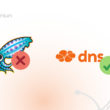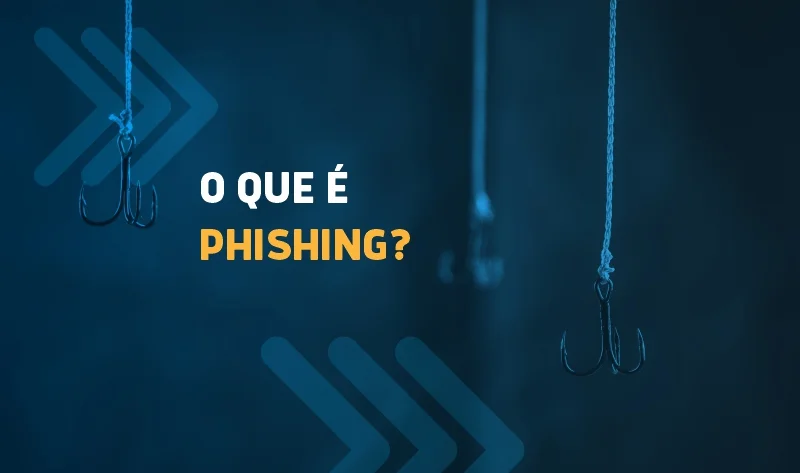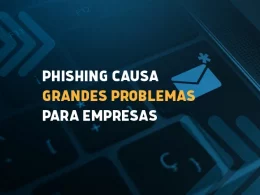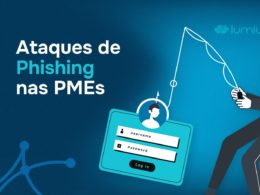Simply put, the term phishing is related to another word of the English language, the Fishing. With this we can understand more clearly about this practice: through phishing, cybercriminals can “fish” data and confidential user and business information through traps and false information.
Using false and attractive information, practitioners launch traps to users to obtain necessary data to apply various scams. It can look for various types of data, such as bank information, personal data, confidential information about the company, among others. This virtual crime can reach all types of people and companies, depending only on the purpose of the criminal.
When a person ends up falling into this type of scam, they can provide important data such as credit card information, passwords, document numbers and other confidential information. This attack can seriously compromise a company's safety , leaving confidential information in the wrong hands.
Understand how phishing works
Unlike other types of cyber attacks , phishing attacks do not use vulnerability points in systems or machines. In fact, the main weapon of this type of scam is the vulnerability of people.
This means that the hacker does not need technological resources for this, it only plants traps hoping the victim believes in fraud and end up providing information. One of the most common forms of this type of attack is by email by email. In this case, the victims receive a fake email with an urgent request, which usually contains malicious links and attachments. To better understand how this trap is prepared, check out this video:

In order to be realistic, it is common for e-mail phishing blows to contain how users used by the user or people who are from the victim's relationship . For example, many phishing emails are “from Bank Managers, Business Directors, Microsoft, Netflix or Google.
If we pay attention, at least once in a lifetime, we received an email regarded as a suspect, who somehow tried to make us abrect a link or an attachment. For this reason, the more realistic this email is, the greater the chances of the victim being convinced.
These link or attachment traps can cause the user to enter confidential information or install malicious software such as viruses, spyware and ransomware. These malicious files may compromise confidential and important data and, in some cases, cause irreparable damage to the company.
What is the role of social engineering?
As we said earlier, the human factor is essential to ensure the success of the coup. In this sense, social engineering is a fundamental resource for this process . With the help of this tool, criminals can induce users by collecting confidential data and contaminating computers, networks and devices of the attack victim.
We can understand social engineering as a technique used by cybercriminals to, through traps and false information, deceive lay and unsuspecting users. Exploring the lack of experience and inattention of the victims , these criminals can collect confidential data and infect devices, favoring the invasion and theft of confidential data .
What are the main types of phishing?
Based on social engineering techniques , attacks may target any type of user or business, depending on the purpose of the criminal. The main types of phishing attack performed today are:
Spear phishing
This type of attack targets a determined group of victims with the same profile, such as IT managers or the same sector . In this case, the email delivers specific information about the type of work the victim does, with a download link for cybercriminals to access networks, collect information or implant malicious software.
Whaling
This phishing attack seeks the big "whales", that is: it is directed to people with superior positions, such as directors, seos, or large representatives of companies and organizations .
It is common to include in this type of email a security alert or legal problem that may be affecting the business, delivering a malicious link for the victim to get more information. In this case, the email can cause the person to be sent to a false page, which requests data regarding the work or bank account data.
Smoking
Using the text messaging service (SMS), this attack is very common and can affect any type of user. Sending short text messages, cybercriminals try to get the victim to open a link or click a contact phone number.
A common type of this type of attack is SMS sent by fake banking institutions , stating that there was a problem with the bill and it was compromised. The intention is to get the victim to enter sensitive information that can later be used in financial blows.
Vishing
With the same goal as other types of attack, this type of phishing seeks to collect personal information or confidential corporate information. The difference in this case is that the attack is performed through a voice call. The cybercriminy can report that he is a brand representative, such as Google or Microsoft, and reports that a virus was found on the victim's network or equipment. With this, he asks the victim to inform his bank details and update antivirus software.
Along with the collection of confidential information, hacker can also install malicious software, which can corrupt data, steal information, or turn computers connected to the company's network into Bots (zombies computers that are used in DDO -type attacks).
Email phishing attack
This is the type of phishing attack most commonly used today. With the help of fake emails, criminals try to convince the victim to enter their personal data, bank information or install malicious software. These emails use social engineering to create a perfect trap that convinces users and induces them to error.
Phishing in research mechanisms
This type of trap is extremely dangerous for companies that do not control internet access within the organization. Extremely elaborately, cybercriminals can place their fake pages highlighted within research mechanisms, making users click by mistake.
With this, they can get bank information, email passwords and social networks, and many other data. They can create identical pages to social networks, entertainment sites and e-commerce pages.
Can you identify this type of attack?
A phishing attack can cause much damage to the victim or company that has been the target of the strategy . From financial fraud to the installation of malicious software, phishing problems can have a big impact.
Often, the dangers caused by this type of attack are underestimated , so that users do not take proper care to avoid clicking suspicious links or downloading files without prior verification. It is very important that, given this type of situation, the user knows how to evaluate the risks and determine the best approach.
It is common that more inexperienced users cannot size the great impact that information theft can have on a person or company. Because of this vulnerability, it is essential that companies implement a conscious use policy of the internet and implement an awareness campaign as a way to avoid this kind of problem.
Allied to this, the company should have efficient tools in order to make the use of the internet within the safer company, such as internet lock software. This feature allows the company to manage access more efficiently and keep users away from the main traps present in the virtual environment.









